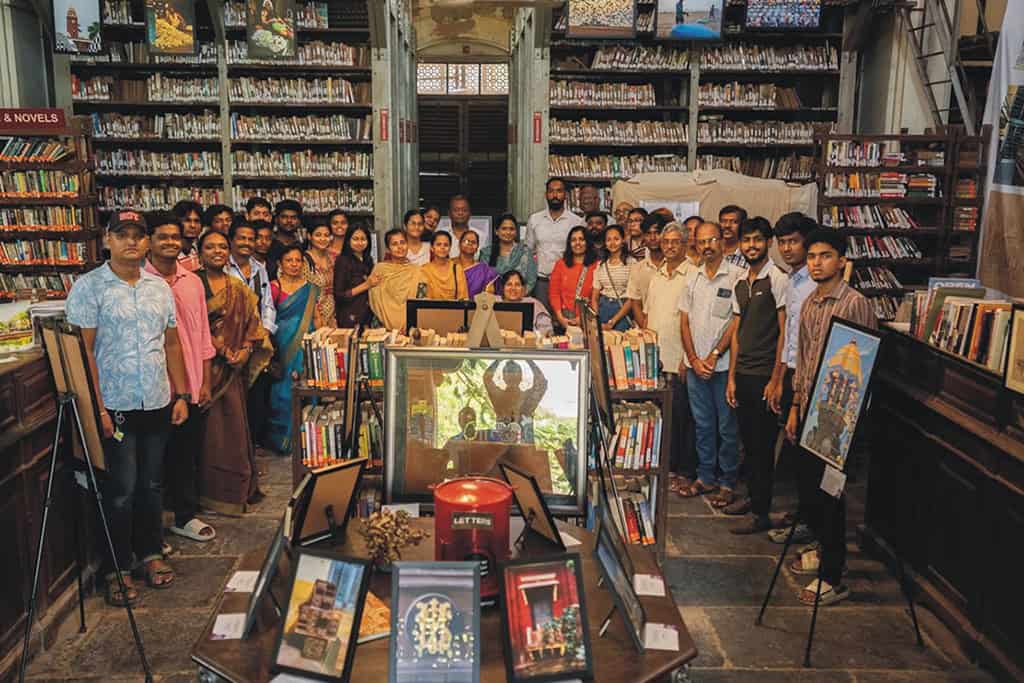‘Sign Language as Art’ Makes a Stirring Statement in Chennai
On the evening of July 13th, 2025, the British Council in Chennai transformed into a vibrant space of expression, gesture, and visual poetry as it hosted Sign Language as Art, a dynamic panel discussion and performance that left the audience deeply moved. Organized by the Deaf Artists NFT Collective in collaboration with Madras Photo Bloggers, Madras Literary Society, and Nam Veedu Nam Oor Nam Kadhai, the evening was part of a larger initiative called Anaivarum – a celebration of inclusivity and creative voices that often go unheard.
Sign Language as Art was more than just a gathering – it was a declaration that sign language is a mode of communication as well as an evolving art form.
Reimagining Language as Art
The evening opened with a compelling panel titled Sign Language as Art: The Intersection of Visual Language and Creative Expression. Moderated by travel photographer Srivatsan Sankaran, the discussion brought together deaf creators from diverse disciplines: Dhinesh R.P. and Swetha Kulkarni (both deaf artists and photographers) as well as the dynamic stage performer Haseena S. The conversation revolved around the poetics of sign, the embodiment of language, and how signing is a choreography of emotion, intention, and resistance.
Each panelist shared their personal journeys – how they first began to use Indian Sign Language (ISL) not just to communicate but to express, to create, and to perform. In their words, sign language is a veritable canvas of possibilities. Their insights challenged conventional notions of language and art, and placed ISL firmly within the realm of performance, photography, and visual storytelling.
A Warm Welcome and a Strong Message
The evening began with an introduction by Viji Thiagarajan, Director Libraries South Asia at the British Council. She welcomed the gathering and spoke passionately about why inclusion must be the way forward in cultural programming. Viji also reflected on the shared efforts with partner organisations and acknowledged the role of art in shaping accessible futures.

Thirupurasundari (curator), Lokesh (artist), Priya (artist), Madhavi (Chief guest, Sathya Priya (teacher), Priya’s mother, Srivatsan Shankaran (curator). Both the pictures are by Venkatesh K – Photographer.
“At British Council, we believe creativity knows no barriers, and sign language powerfully proves that. It is not just a mode of communication, but a vibrant form of artistic expression — shaping narratives and fostering inclusivity in cultural spaces. Through our collaboration with Madras Literary Society, we are proud to celebrate differently abled artists whose visual language turns lived experience into powerful art and cultural storytelling. This event embodies our commitment to championing inclusion, expanding access, and making our libraries vibrant, welcoming spaces where every voice is heard and every form of expression is seen and valued,” she said.
This was followed by a note from Thirupurasundari Sevvel, who expressed heartfelt thanks to the British Council for their continued support and partnership in making the event possible. She also spoke of the previous edit of the Anaivarum exhibition hosted at the Madras Literary Society, which had brought together several communities, celebrating voices from the margins and building bridges through creative dialogue.
Indian Sign Language Jam (ISL JAM): A Performance to Remember
At 6 PM, the Indian Sign Language Jam commenced. It proved to be an evocative piece of performance and storytelling through movement. The performers were supported throughout by interpreters Ms. Nitya Giri and Ms. Roja A, who were not only facilitators for the panel but also an integral part of the segment.

All the artists along with organisers of Anaivarum, chief guest – Madhavi Latha, founder of YWTC trust.
The sequence began with a signed song by Haseena S, followed by two powerful mime acts: the first, on Sign Language Accessibility, performed by a group of young Deaf artists, and the second, titled ‘Let’s Go Back to the Library’, which explored memory, learning, and shared public spaces. The event closed with a brief, insightful note on deaf culture, giving attendees a glimpse into a world rich in history, identity, and artistry.
Art, Architecture, and Inclusion
The Anaivarum exhibition itself was inaugurated by Madhavi Latha, a disability rights activist and Paralympian who embodies the spirit of resilience and advocacy. Her presence set the tone for a week-long celebration of creativity, accessibility, and inclusive heritage.
The art exhibition was first displayed at the Madras Literary Society from July 5 – July 12. It featured the remarkable work of ten deaf photographers and artists who explored Madras through its heritage, architecture, and landscapes. The display was thoughtfully set up in a non-intrusive manner, respecting the historic interiors of the 200-year-old library building while adding layers of artistic relevance.
This collaboration marked not only a visual dialogue with the city but also a cultural shift, emphasizing that inclusion is not just about access, but about reimagining who gets to tell the story and how.
Looking Ahead
With its rich combination of heritage, visual language, and community participation, Sign Language as Art was a memorable milestone in Chennai’s cultural calendar. It brought together Deaf and hearing audiences, artists, interpreters, photographers, and heritage lovers in a shared space of learning, reflection, and joy.
As the evening drew to a close, one message rang clear: this is only the beginning. The Madras Literary Society, with inclusive vision in terms of heritage which has been a crux in the last years , promises more such collaborative events that celebrate diversity, creativity, and the many languages —spoken and unspoken — that shape our city.